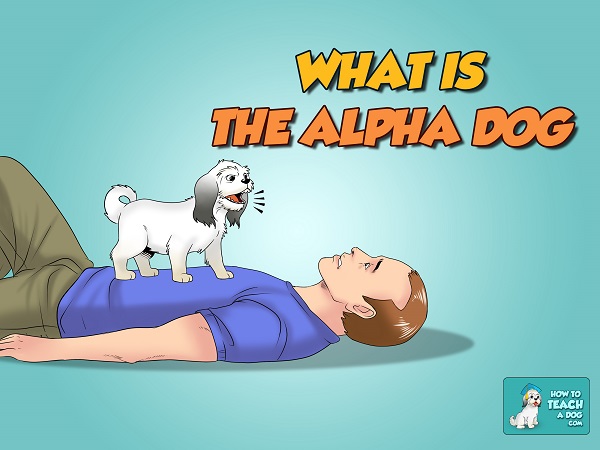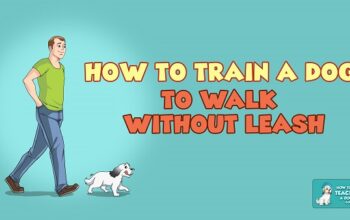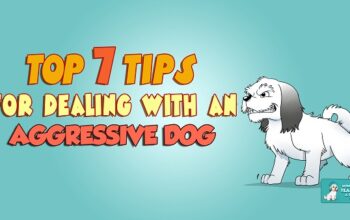
The Alpha dog concept is a long passed down tradition in dog training, but it’s not always fully understood and can often have a lot of myths and half-truths associated with it. The concept has been hijacked in dog training and has become highly popularized with books and television shows, but it can get an owner in trouble along the way too.

In the purest sense, Alpha relates to the standing within a pack of canines and refers to the number one individual. The concept comes directly from wolves and the observations of captive wolves. In wolf society, there is a relationship among wolves established via hierarchy, and this structure keeps the pack safe and secure.
Without going too much into wolves and how the roles relate to them, what we can say is that some of these ideas do pass down to our domestic canines. The translation isn’t quite as pure, however, and that is the problem. Trainers have tried to take the information learned from wolves and directly apply it to dogs, but you can’t fully do that. While the essence is quite similar, one flaw is that dogs don’t entirely relate to people in the same manner as they do other dogs. Our communications aren’t as clear and well defined, and the relationship is different. What a person may define as being Alpha may have little to do with how the dog sees it, and there may still be problems between the human and dog.
Training has often told people that there are a set of rules to follow in order to establish the Alpha role over the dog, and these have included things like going out the door first and having the dog eat second behind the people. These concepts come from the Alpha based theories of how you would apply roles into a human/dog pack. Unfortunately, there are many dogs that are not well trained and don’t listen to the humans in the family even with the so-called Alpha rules. It’s because the concept is not fully understood within a human/dog pack.
I prefer to remove the term Alpha when discussing this topic because I find that it’s kind of a loaded term where someone thinks they understand what it means when we’re really talking about different things. Instead I like to discuss structure, respect, and leadership. It’s better to think of yourself as a leader in your dog’s eyes than the Alpha as that will help to better guide you.
Dogs most certainly do have a hierarchical structure to their packs, but it’s fluid in nature. It’s not set in stone. Relationship roles can change at any time and are variable. They can be influenced by age, illness, adding in new dogs or other animals or even new people. Stress and changes in environment can also cause changes within a pack. Roles are defined simply by how dogs relate to one another. In a healthy pack there is little aggression, and roles are maintained by respect. The use of aggression is largely unnecessary since the dogs understand their place within the group dynamics. It creates harmony. But the roles can change over the years. The dog that was once considered to be the leader may age or become ill, and a younger pack mate may rise to the top.
Aggression in a pack can happen when the dynamics aren’t as well accepted or when there is conflict. Conflict can come from two or more dogs who vie for the same position or fight over the same resources. This is more common when the dogs are of the same gender. There can also be interference from humans that can lead to aggression. It can be difficult to always tell which dog is actually the leader. Humans tend to also favor one dog over another for reasons that have nothing to do with pack dynamics. This can lead to big problems, however. The human interference can actually encourage some of the aggression to take place as the dogs vie for attention or resources. In some cases a dog that is generally observed to be the more likely leader is not favored. An example is when a small dog is highly favored over a much larger dog. While this may not be always be problematic, it depends on the dogs involved as to the outcome.
Hierarchical structure does occur in human/dog packs too, but it’s different than when it’s between dogs. We don’t communicate like dogs, and that can be confusing for dogs when we attempt to do so. This is why training should be used to establish respect and structure with your dog. This is how a human becomes a leader in a dog’s eyes. Alpha should not be interpreted as physical punishment, ear pinching, pinning a dog to the floor, rolling him on his back, or the myriad of other tactics often promoted to people as a way to become an Alpha. Instead, these types of behaviors can actually cause aggression towards the human because the dog instead views it as a confrontation. You should never endeavor to create a physical confrontation with your dog. I’ve even heard of people who bit their dog to establish Alpha rule! This is never a good idea as many dogs use aggression in a confrontation to defend themselves from an aggressor. You don’t want your dog to view you or any human as an aggressor.
The relationship between dog and human is a partnership, and you should ideally be the leader of the partnership. There always has to be a leader in all relationships, both human and dog. The idea of being a leader is not nearly as tainted as the term Alpha. It allows you to use training and respect to develop a dog who listens to you well. Being a leader is really all about using the concept of training to show your dog what you would like him to do. There is no negativity or confrontation associated with it at all.


